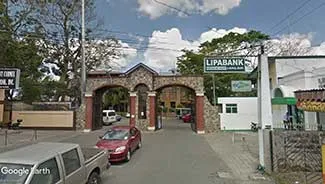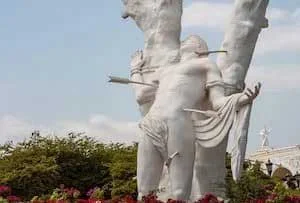Mataasnakahoy: Historical and Folkloric Trivia about some of Its Barrios
This article is part of a series on historical and folkloric information about the towns and cities of Batangas at the barrio level. The information contained herein has been taken from documents required in the early fifties by the administration of Elpidio Quirino for the reconstruction of the nation’s history after vital documents were destroyed during the last World War.
All Department of Education Districts around the Philippines were required to submit historical and cultural data down to the barrio level for collation and storing by the National Library of the Philippines. The documents are now available at the NLP’s Digital Collections.
Here are the bits of trivia about some barrios of Mataasnakahoy.
Bayorbor
The barrio of Bayorbor was said to have first been settled as early as the middle of the 17th century. The original families were supposed to have been the Landichos, Ariolas and de Ocampos. They were from Taal and moved along Bombon (Taal Lake) until they found a suitable place to settle close to what is now Mataasnakahoy. That place was the “small yet fertile sitio of Munting Sulok.” When a road was constructed that ran through the middle of Bayorbor, the families which settled Munting Sulok moved further inland. As to Bayorbor’s name, this was supposed to be a “whim of the old settlers” and did not have any special meaning.
(Source: History and Cultural Life of Bayorbor)
Calingatan
The barrio of Calingatan was supposed to have been established in the 19th century. Its name was supposed to have been derived from the native dialect “nakalingatan,” meaning the neglected or forsaken place. The barrio’s original families were the Hernandezes, Lubises, Lescanos, Arandas and Moradas. During the Spanish colonial era, the barrio was almost wiped out by a deadly cholera epidemic. It was said that the man “who dug the grave of a dead person in the morning cannot be sure whether on the following day he will still be living.”
(Source: History and Cultural Life of Calingatan)
Kinalaglagan
It was said that as the settlers of what used to be old Lipa moved further inland to escape the frequent eruptions of Taal Volcano, one of the arrows of the statue of San Sebastian, the old settlement’s patron, fell to the ground in what is now the barrio of Kinalaglagan. This, according to folklore, is how the place got its name1. [See Notes and references] The barrio’s original settlers were the family of one Ugo Recio.
(Source: History and Cultural Life of Kinalaglagan)
Nangkaan
As its name implies, Nangkaan was where jackfruit (nangka or langka in Tagalog) was raised abundantly when the barrio was established during the Spanish colonial era. The barrio’s soil must have been fertile because its sitios were so named also after various plants: Santol (wild mangosteen or cottonfruit), Kawayan (bamboo), Dapdap (tiger’s claw2) and Anus (when you are done laughing, this is supposed to be a variety of bamboo). The original families of the barrio were the Lubis, Orenses and Tipans, who were formerly from Taal; along with the Obtials.
(Source: History and Cultural Life of Nangkaan)
San Sebastian
According to folklore, the barrio was so named because an image of San Sebastian was once found tied under one of the big trees in the area. The original settlers of the barrio were the Manalos, Matibags and Velasquezes. Late in World War II, as the Japanese started to commit atrocities, San Sebastian was turned practically into a ghost town as many of its inhabitants evacuated to the Volcano Island to escape the Japanese soldiers.
(Source: History and Cultural Life of San Sebastian)
Santol
As its name implies, the barrio of Santol was so named because of the abundance of santol or cottonfruit trees found by its earliest settlers during the Spanish colonial era. These original settlers were composed of five families: the Ariolas, the Silvas, the Mangubats, and the Malaluans, all formerly from Taal; along with the Maralits, who had come from Cuenca. There was a cave near the shores of the lake which was called Kinaiputan (literally, where the birds defecated), which was supposed to have been used by insurgents presumably during the Philippine Revolution. During World War II, inhabitants of the then-town of Lipa and Poblacion Mataasnakahoy also evacuated to the barrio to escape the gory of war.
(Source: History and Cultural Life of San Santol)
Upa
According to folklore, the barrio of Upa used to have just one shack which was used by farmers as shelter against the rain. In the late 19th century, one Lorenzo Biscocho, a farmer from Taal, was supposed to have been the barrio’s first settler, along with his family. Later, during the American colonial era, came the Metrillos from Cuenca along with the Tibayans from Taal. The barrio’s name means “rent” in English; thus, according to a 1950s document, it could be assumed that the name implied that the “land which was formerly a wilderness was given out as a form of payment for some sort of services.”
(Source: History and Cultural Life of Upa)
2 “Dapdap,” online at Philippine Medicinal Plants.


